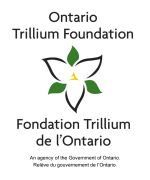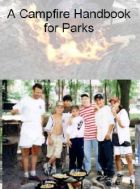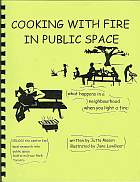

Pages in this Folder:

Related Folders:
See also Department Site Map
Support Provided by

Toronto Parks and Trees Foundation

This website has received support from celos.ca through the Trillium foundation.
Publications
Comments?
For the basics, see
- Website & Privacy Policies
- How To Get Involved
- The Role of the Park
Search options:
Department Site Map
Custodians:
 Annual Reports
Annual Reports
Reports from the first 7 years (up to 2002)
(After the newsletters were started in 2000, they gradually took over as the news carrier.)
The Friends of Dufferin Grove Park:
Report of activities for 2000, 2001, 2002
In the nine years after the adventure playground “sand pit” was first put into Dufferin Grove Park, there have been four “reports,” telling about what happened in the park and how money was spent. Now seems like a good time to make the fifth report. Some important things have changed, about the city that owns the park. The city has been forced into amalgamation and therefore into a much larger government structure, and the friends of the park have grown from a very small informal group to a larger informal group.
About the park: Dufferin Grove Park covers 14.4 acres (5.8 hectares). That means it’s larger than Christie Pits (12.8 acres), Allan Gardens (13.1 acres), and Monarch Park (12.5 acres), but considerably smaller than Trinity-Bellwoods Park (37 acres), Kew Gardens (20.7 acres), and Withrow Park (21.1 acres). Dufferin Grove Park is a neighbourhood park (rather than a regional park). It has a soccer field (added in 1955), a small-scale baseball diamond, a basketball court (added in 1993), a playground, a campfire circle, a wading pool (built in 1954), a large sand pit/adventure playground (1993), two outdoor wood-fired community bake-ovens (1995 and 2000), an artificial ice rink (built in 1960, rebuilt in 1993), and space remaining for volleyball, badminton, ball hockey, touch football, cricket, frisbee, theatre, dance, music, and picnics. There are three buildings with a roof: the field house, built in 1913, renovated in 1955 (containing the park’s main public washrooms), the rink house/ clubhouse, built in 1993, and the rain shelter (without walls) by the playground (built in 2000). The Parks staff used to plant flowerbeds, but they grassed over the last bed in 1993. Since then, various gardeners from the neighbourhood have planted 13 garden areas, some small, some medium-sized, some with native plants, some with mixed perennials/ annuals, and some with vegetables. One of these gardens is a little marsh, with a small fountain.
Our overall goals are still the same as in our first report:
1. to break down, even if only in very small ways, the age and culture ghettos (reflected in the park) that can make people in cities quite suspicious of one another, or angry, or fearful
2. to increase the possibilities of the park as a place where neighbours can take pleasure in each other’s gifts
3. to work together with the Parks and Recreation staff to make the park as beautiful and interesting and ecologically alive as it can be.
A CATALOGUE OF OUR PARK ACTIVITIES, SEPTEMBER 2000 TO December 2000:
- Sept. 1, 2000: publication of first monthly park newsletter, establishment of the Centre for local research into public space (CELOS) – really just a bookshelf to begin with.
- Sept. 3: Morris Dancers’ Ale, with groups from as far away as West Virginia meeting on the basketball court to show each other their latest dances, and eating bread and pizza by the bake-oven. Sept. 9: Annual Neighbourhood Street Fair, with a potluck at the oven.
- Sept. 18: Nadeem Soumah shooting his film on the basketball court, with his classmates from film school. Nadeem was a long-time park basketball player.
A CATALOGUE OF OUR PARK ACTIVITIES, January 2001 to December 2001 2002:
- Jan.19-20 2001: The Dufferin Cup Hockey Tournament for kids 12-13 from across the city.
- Jan. 29: Trinity-Dovercourt District Girl Guides annual winter skating party. They made “s’mores” with hot marshmallows between melted chocolate bars. January, 2001 Newsletter
- Feb. 18: Goodbye Party for the rink and for park coordinator Lily Weston, with soup and bread, the Darbazi Choir, and many special guests.
- Feb.19: Community Meeting “The Fate of the Park” resulting in 70 new “friends of the park,” plus the drafting of a “park blueprint.”
- March 20: Seed packaging workshop at the rink house to get Arie Kamp’s seeds ready for Foodshare’s “Seedy Saturday” at Scadding Court. *March 23: Park website established by Emily Visser, with pictures, links, everything!
- March 31: Third annual dog walkers’ spring park cleanup to pick up the winter remains of litter and dog poo.
A CATALOGUE OF OUR PARK ACTIVITIES, January 2002 TO MAY 2002:
- February 22: Seed packaging day for Seedy Saturday with Rhonda from Stop 103. Arie didn’t have as many seeds as last year but still it took them two hours to package up what was there.
- March 24: fifth annual matzo-baking with Annie Hurwitz and Ron Paley. This time it got on the food channel web site.
- April 17: playground meeting with Beth Stockton.
- May 4,5: Raku Pottery in the park, with David Windle and friends, read more about Raku pottery in April, 2002 Newsletter.
- May 4: Mayor’s cleanup day with Councillor Mario Silva and the boy scouts.
- May 6: Park benches temporarily moved to Dufferin Mall for “Legacy in our Neighbourhood” bench art project. Lou Micelli from the garden centre said he would move the benches, but they were too awkward for the forklift, so Gene Threndyle did it with his truck and three strong helpers.
- May 25 – June 2: Yurt in the park, including music, school visits, traditional food, and films in the yurt.
- May 30: “Citizens’ Hall” community meeting: “The fate of the park, one year later.”
Everyday events and more..
EVERYDAY EVENTS: The events listed above were just the unusual events. The everyday things were much more of a focus for the people in the park – the explosion of youth activities in the park every spring, the care of the gardens, the wading-pool and wood-oven scene in July and August, the many months of rehearsal and prop-making near the field house, and then, of course, the skating rink in the winter, and all the social life around it. There were also crises from time to time, involving a few beatings (one very bad one) and robberies, some largely unsuccessful attempts to work with the police and the courts, and the ups and downs of trying to keep a decent standard of public behaviour in the park (this included some struggles with youth, with homeless men and women who either drank too much or heard too many voices, and with a kind of “park rage” that sometimes leads strangers to become very angry with each other).
AWARDS: During 2001 it was heartening to get two signs of public recognition for what happens at our park: an award connected with Jane Jacobs and her strong regard for urban neighbourhoods, and a “Great Community Place” award from an international parks conference in New York.
APPENDIX ONE:
BUDGET SUMMARY January 1 – Dec.31, 2001, FRIENDS OF DUFFERIN GROVE PARK
Quick summary:
EXPENSES:
Supplies and maintenance: $5,152.43
Groceries: $11,400.02
Farmers’ Market fees: $180
Wages and honoraria: $5,973.79
TOTAL EXPENSES: $22,706.24
APPENDIX TWO:
HOW MUCH DOES IT COST TO RUN OUR PARK?
Parks and Recreation costs are not tracked by individual location. The following numbers came from questioning various managers about specific activities we know are carried out at Dufferin Grove Park regularly. The managers gave us information about job structuring, hours, wage rates and benefit costs, which were calculated as realistically as possible. Some of the expenses were one-time for this past year, but we feel they are probably equivalent to one-time expenses that may occur in other years.
SUMMARY OF ESTIMATED DUFFERIN GROVE PARK OPERATING EXPENSES, 2001:
APPENDIX THREE
CONTEXT: PARKS AND RECREATION OPERATIONS SPENDING IN THE RECENT PAST
1961 City of Toronto: $60,731,619
- parks and recreation: $4,384,678
1962 City of Toronto: $65,996,178
- parks and recreation: $4,822,456
1963 City of Toronto: $66,605,513
- parks and recreation: $4,702,477
1964 City of Toronto: $72,340,341
- parks and recreation: $4,659,682
1965 City of Toronto: $77,318,775
- parks and recreation: $4,496,045
1997
The field house:
Last summer and again this summer David Anderson’s Clay and Paper Theatre operated its summer youth theatre troupe (funded by the federal government’s ---program) using the field house as its workshop and base. That meant that the field house changed from being the hangout of the marijuana club to being the workplace of 6 (last year) and 10 (this year) young actors/ artists who made huge papier mache puppets and street-theatre sets and rehearsed there. They usually worked outside the field house under the linden tree, and all summer long people could stroll by and watch how street theatre is made. The company performed in various Toronto parks, including ours. This year they got a special grant from the Ontario Arts Council under a new heading “community theatre.” They put on a humorous play/ pageant about the building of our bake oven called “The Resurrection of Fornax,” which ran for four days at the end of August and had front-page coverage in the Toronto Sun’s Arts section. This production also involved some of the youth from the park basketball court, who were hired to help do the papier mache puppets and be part of the production crew.
A FEW SHORT STORIES ABOUT THE PARK 1996-1997:
1. Virtual community on the information highway.
On the last day of February a man called from New York. He had found out about our work in the park on the internet. Was it true that we had immigrant women sewing clothes for their children on treadle sewing machines in the park?
I said it wasn’t true. Good grief!
We think it was a species of cybernetic gossip, a weightless substance that floats easily from web-sites into meetings and onto web-sites again, changing its details as it goes. It’s propelled along the information highway by wishful thinking. An example might run like this: “…..I’ve heard there are some community gardens; maybe there are a lot of them; maybe they’re all over the place; maybe they enlist dozens of volunteers, maybe even hundreds…..I’ve heard some of the volunteers are children; maybe they’re very troubled children; maybe they’re gang members who exchange their weapons for garden hoes and grow their own food. I’ve heard those gang members are mentoring young children in their homework; they get them to stay in school; maybe they’re even cooking for old people in a community kitchen, and writing a cookbook for teenagers…….”
A CATALOGUE OF OUR PARK ACTIVITIES, SPRING 1996 TO SEPTEMBER 1997
THE BIG BACKYARD:
- Summer ’97: Steve Smith and Julie Whitfield of Creative Environmental Education Projects ran the first Dufferin Grove Park Summer Environmental Arts Camp (six one-week sessions of twenty registered campers and ten drop-in children). This was funded by the City of Toronto’s General and Recreational Grants program and the city’s “Breaking the Cycle of Violence” program. We were able to hire youth from the park and the neighbourhood to help staff this camp.
- Isabel Perez came back to cook over the Big Backyard fire once a week.
THE RINK HOUSE/ CLUBHOUSE:
- May ’96: Mario Silva, our city councilor, arranged for the City Property Department to put four eye-level windows into the rink house (at a cost to the city of $8000). Because they did not let in enough air we used $700 of a donation from the Dufferin Mall to replace one of the new windows with a window that opens all the way, thereby making the rink house usable in hot weather.
- June ’96: we received a grant of almost $7000 from the City of Toronto’s new Food Access Program allowing us to have a kitchen put into the rink house, in two sections. The stove and fridge and cabinets and counters went into the former rink office, and the industrial sinks and pot shelves and dough mixer went into the former slop room across the hall.
- September ’96: we had a work-day when nine volunteers broke down the concrete block wall between the two narrow change rooms in the rink house, yielding one large light-filled room, usable for community functions and much easier to control during skating season. A carpenter and a bricklayer finished the wall edges for us.
- January ’97: A grant of $3500 from the Maytree Foundation allowed us to instal a woodstove into the rink house, together with a wrought-iron safety fence.
- March ’97: Our local Home Depot donated $1000 of track lighting to replace the harsh fluorescent lighting in the rink house.
- May ’97: The Parks and Recreation signage division installed a sign on the front of the building, naming it the “Dufferin Grove Park Rink and Clubhouse.” For this sign they included a newly designed logo, for a community bake-oven.






 Printer friendly version
Printer friendly version